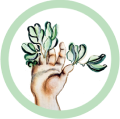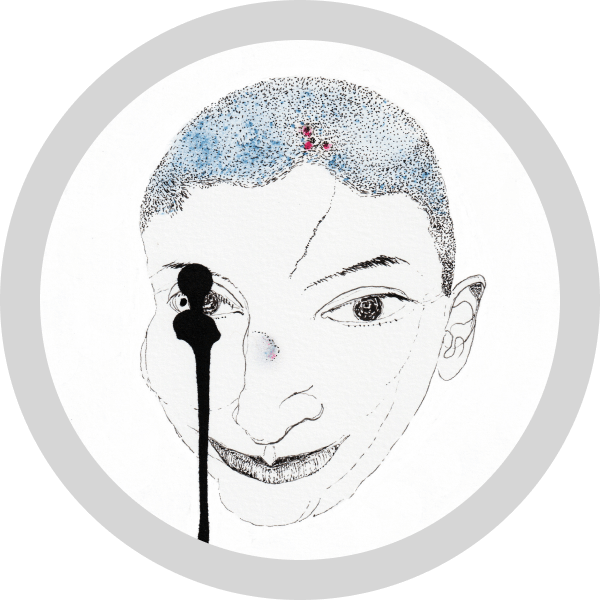Group Residency Programme Orkney
Air, Sea and Soil: SOUNDINGS and SURROUNDINGS
Sat 30 Aug – Sat 06 Sept 2025
Application Deadline:
has passed
The Museum of Loss and Renewal is delighted to invite applications for the Group Residency SOUNDINGS and SURROUNDINGS, Orkney, Scotland.
SOUNDINGS and SURROUNDINGS has been devised around the relationships of ‘Air, Sea and Soil’, encompassing the Orkney Islands’ remarkable natural environment. Residents will be welcomed to the Birsay area of Orkney, where the bespoke programme will take place in Linkshouse’s excellent accommodation and studio facilities, and through visits to Neolithic Orkney’s World Heritage Sites.
SOUNDINGS and SURROUNDINGS will be lead by Tracy Mackenna (she/her), Artist and Curator of The Museum of Loss and Renewal and Erasmus Mackenna (they/them), Stage Director, Lighting Designer and Sound Designer and will be facilitated by Tracy and Erasmus. Subject-specific contributions will be delivered by a range of multidisciplinary Orkney-based experts who have in common site-specific, participatory and socially engaged practices revolving around sound and environment. Their diverse skills, expertise and modes of working are activated to investigate lost futures, intersectional histories, ecological and personal landscapes, experimental identities, ruin memory, trauma mapping, site recording, material and immaterial realms, deep time, marginalised communities and hidden lives.
The Group Residency is offered for practitioners and researchers working in all creative disciplines and for those who have a strong interest in the investigation of the Group Residency themes in relation to space, sound and visuals. The group will comprise of approx. ten participants.
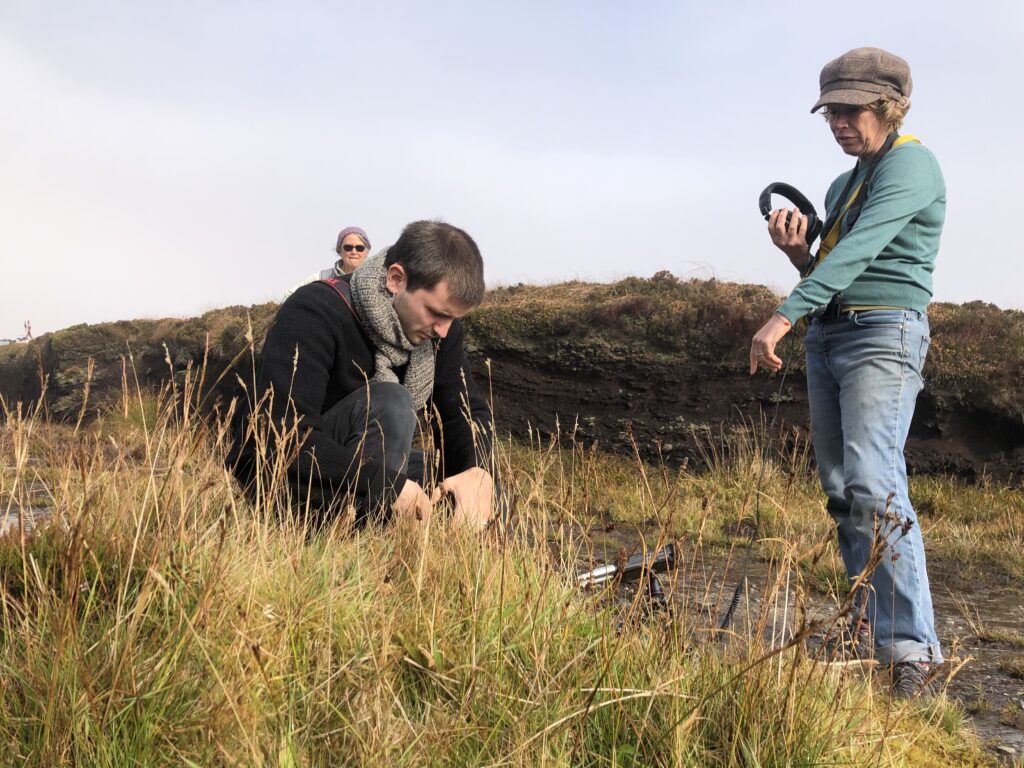
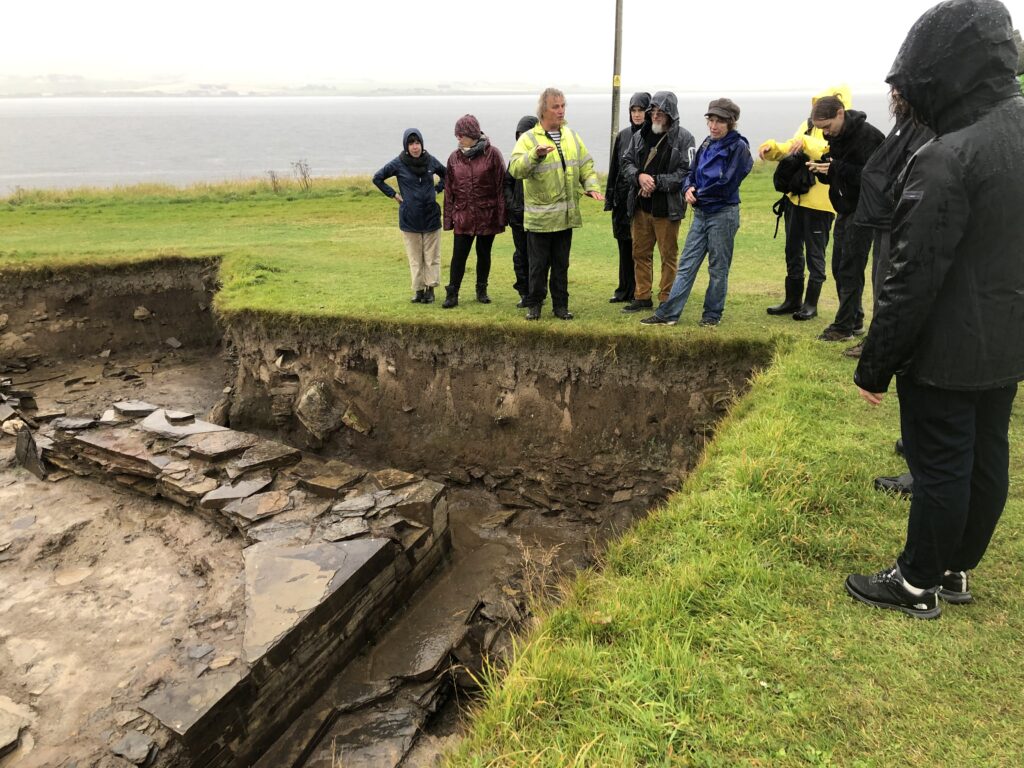
Focal Points
- Creative practices
- Interdisciplinarity
- Technological innovations
- Synthesis of space, light and sound
- Readings of alternative theories and texts
- Co-learning
- Individual practice
- Experimentation
- Semi-structured programme
- Expert facilitator/s and guest contributors
- Collective platform for encounters
- Supportive, caring, non-hierarchical environment
- Peer and self reflection
- Fully catered
- Immersive experience
- Relationships to land, connections through place
- Location specific, inc. Neolithic Orkney World Heritage Site
- Imagining futures
- Publics; participants and audiences
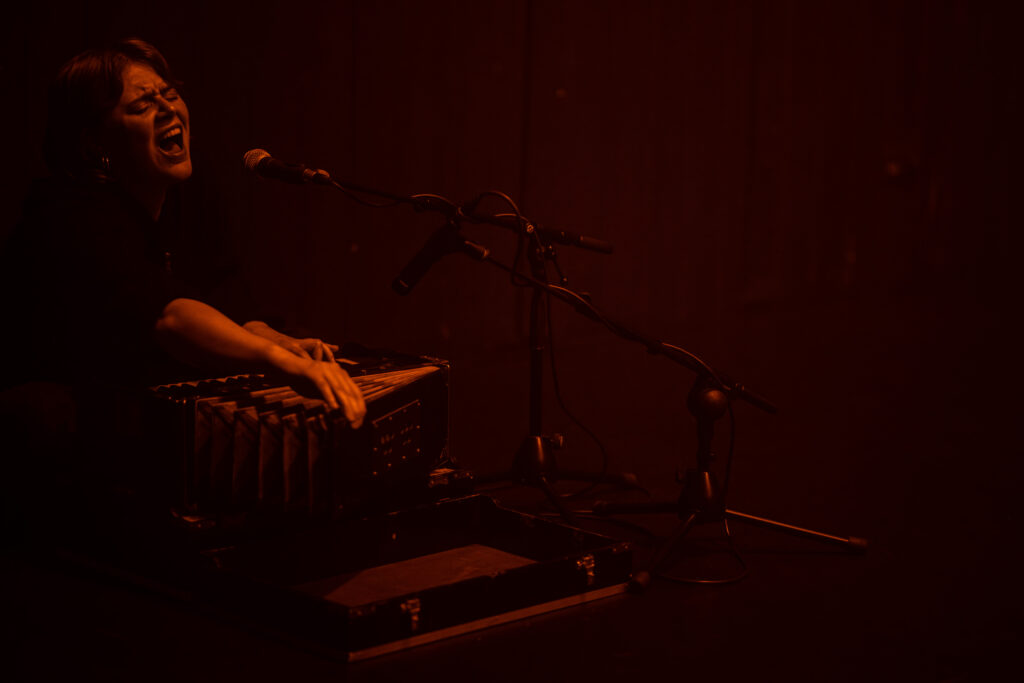
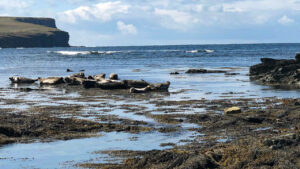
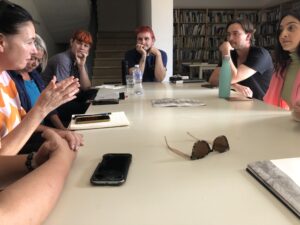
Aim
The aim of the Group Residency is to develop approaches to place that are experimental, inventive in their form, and that respond to place by paying attention to the intersections and collisions between art, culture, materiality, technologies and place. Individual experience will be regarded as being not at the world’s centre, but woven into its fabric.
Opportunities are created for creative practitioners and researchers to share and establish a bank of knowledge and creative strategies, both globally interconnected and hyper local, digital and analogue, for imagining new responses to places and the multiple, layered and contested histories they hold. Bringing together residents from a range of areas of practice and research, the potential to create an international network is made possible.
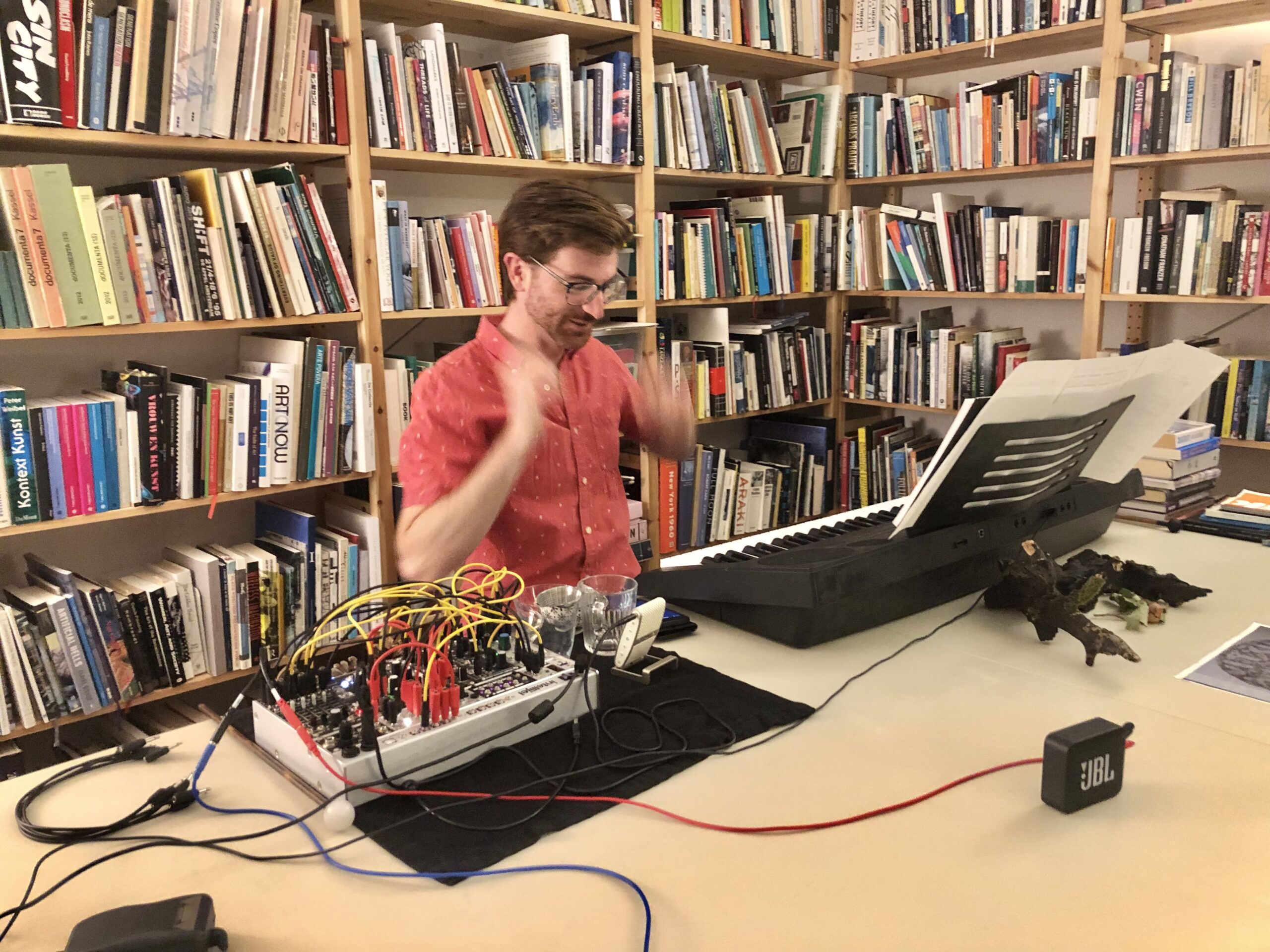
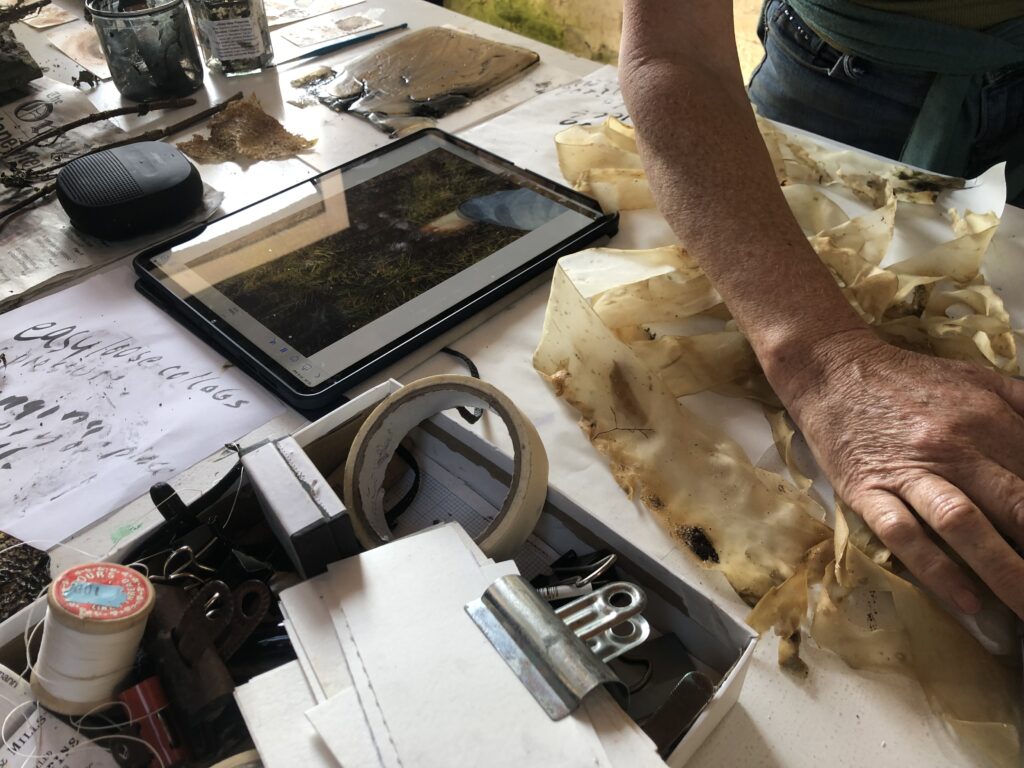
Ways of Working
SOUNDINGS and SURROUNDINGS will provide a partially-structured and hands-on programme of site-based ways of working that are shared to enable residents to develop their skills and understanding of how to investigate site as part of a creative practice and for public presentation to a global audience.
The programme is devised around a bespoke itinerary, with carefully crafted indoor sessions that focus on expanded approaches to discussion, presentation, making and sharing. Outdoor sessions will introduce residents to the stunning natural landscape and world-class archaeological sites. Utilising individual practices, residents from diverse cultures and creative disciplines will focus on different ways of responding to place through immersive, connected experience in site, land and weather.
Designed to be supportive, the programme will enable residents to develop their skills, and understanding of place across a range of approaches and technologies. The residency experience will stimulate new ways of thinking and experimentation through production, research, co-learning and presentation. The programme will provide a framework and act as a catalyst for deepening observation and expanding awareness of the non-human and human world.
Facilitators and residents, from diverse cultures and creative disciplines, will work together and on individual practices through collaborative place-based making processes. This will generate and present global and local knowledge and strategies for imagining the futures of fragile cultural environments through sound, acoustics, created spaces (physical and non-physical) and alternative social narratives.
Value will be given to the individual knowledge and experience of each resident, and over shared meals, residents and facilitators will expand the time for exchange and developing relationships and networks.
By thinking and doing through the lens of SOUNDINGS and SURROUNDINGS we will explore intersectional histories and lost futures whilst inhabiting a scarred landscape that is 400 million years old. Residents will be enabled to activate dynamic haptic, sensory and experiential articulations of place, and to express the psychogeography of space, experimenting with what it means to transpose and transcribe, inventing while sifting through the multiple histories and geographies of carefully chosen locations and stories in the Orkney Islands.
Sessions will stimulate work and reflection on hidden narratives, ruin memory, mental illness and wellbeing, reconstructed and non-linear timelines and experimental aesthetics.
Guided walks, visits and readings will take place in lost, renewed or fragile places. Discipline experts in the local community who hold precious knowledge of archaeological sites, abandoned places, spatial, sensory and local history past and present, and collecting, archiving and presenting, will contribute to bespoke sessions. The residency programme includes time for residents to work in Linkshouse’s work spaces and beyond, applying developing knowledge and content gained during the Group Residency to own practices.
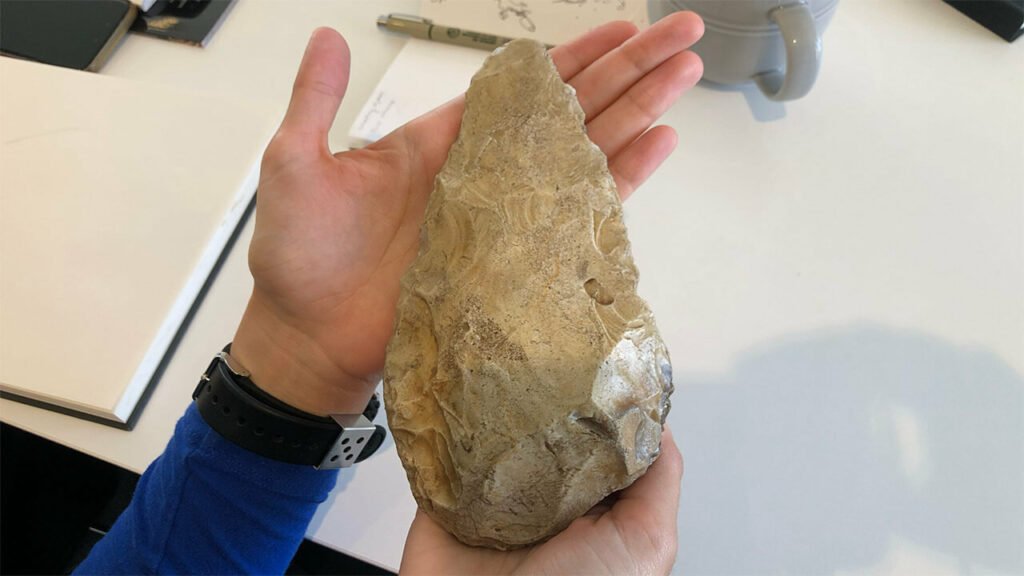
Facilitators and Programme Contributors
FACILITATORS
TRACY MACKENNA (she/her)
Tracy (RSA, Professor Emerita; SCO-IT) is the Curator of The Museum of Loss and Renewal. She is an artist, curator, educator and publisher. Her art practice is a creative and discursive site where production, presentation, exchange, co-learning and research meet. Tracy’s focus on place(making), (un)belonging, memory, (personal)narratives and imaginary futures can be seen in projects exhibited and published internationally e.g. Micromegas (scale, philosophical and scientific thought and human foible), War as Ever! (conflict, looking and art), Rock and Dust | Roccia e Polvere (activating archival material, harmonies and tensions between place, people and time), Ash, Chalk and Charcoal (violence in spatial mark making, private and public spaces), Friendly Invasions 2034 (exhibition as process; interplay between audience, place, cultural legacy).
She is a highly experienced, award winning educator who has devised and lead multiple group learning projects situated within the international museum and gallery sector, and higher education.
ERASMUS MACKENNA (they/them)
Born at the turn of the millennium and hailing from a post-industrial city in the North-East of Scotland, Erasmus’ work is dedicated to the intersectional exploration of outsiders in society, and giving voice and form to their lives and struggles. Erasmus’ main practices are those of a theatre director, lighting designer, scenographer, sound designer and musician.
Believing that the human species in its current form is doomed to end in the near future, Erasmus works to develop a body of work that contributes to the modern mythology of the contemporary world. Dancing on the borders between fact and fiction, Erasmus’ work combines sociological analysis, nihilistic existentialism and notions of progressive idealism to give form to living portraits of scarred individuals, struggling in the dark and crying for help. Forgotten pasts, hidden presents and lost futures are the backdrop for their lives, and how they navigate, succumb and resist these forms the action and the anecdotes of their work. Their work shows our species hurtling towards destruction, searching for relief and repair, dancing on the ruins of a rotten way of life.
Light, space and sound play a crucial role in Erasmus’ work. They are heavily inspired by musical genres such as noise, drone, industrial, metal and folk. Their work as a designer is highly influenced by the aesthetics and spaces of subcultures, and styles such as brutalism, minimalism, post industrialism, metropolitanism, abandonment and ruin, digital culture and rural aesthetics.
They are based between Amsterdam, the Netherlands and the Orkney Isles, Scotland.
PROGRAMME CONTRIBUTORS
AMY BEESTON (she/her)
Amy is a sound artist and audio researcher whose work encourages others to listen more deeply to their everyday environments.
Her practice is highly interdisciplinary and often collaborative, allowing her to repurpose scientific studies in human hearing and machine listening to create ecologically-minded sound installations and participative listening experiences. Amy creates both small, quiet wall-hung works with fixed-media soundtracks and room-sized, ever-evolving soundscapes that alter their sonic state in response to characteristics of visitors’ own sounds.
Since moving to Orkney, Scotland her work is increasingly influenced by principles of acoustic ecology and ecological sustainability. She is a member of the Móti artists collective in Orkney, and is a co-founder of the Yorkshire Sound Women Network and Sheffield-based artist collective SONA.
MARK EDMONDS (he/him)
Prof Mark Edmonds is an internationally respected and highly influential prehistorian and the author of more than 20 books and dozens of articles, among them Ancestral Geographies; The Langdales, and Orcadia. An abiding interest in arts-based approaches to the interpretation of archaeological material has led Mark to experiment with poetry, print-making, music and sound collage across a number of projects.
While at the University of Sheffield, he developed an MA in Landscape Archaeology, which has had a wide and lasting influence on landscape-based research and teaching. In Orkney, Mark has an on-going involvement in work at the Ness of Brodgar. He was also the director of Working Stone; Making Communities, exploring the biographies of stone tools found in Orkney over the past two centuries.
MARK JENKINS (he/him)
Mark is an award winning film editor and a filmmaker in both the arts and commercial sector.
He has extensive experience in film and events programming. He also delivers film education and training. His recent work includes many aspects of working on cultural heritage and arts projects through research, development, training, production, exhibitions and events.
As part of Kolekto Cultural Heritage and Arts with Rebecca Marr, photography, film and audio production is central to his work. Kolekto draws on archive material, oral history, folklore and local history to produce creative, distinctive and informative new content. Kolekto works with museums, community groups, galleries, commercial businesses and other artists.
Facilities
The residency programme will take place in Linkshouse which is situated on the St Magnus Way pilgrimage route on the Atlantic Ocean and amidst farmlands, and at sites of archaeological, historical and social importance in Orkney, accessible by foot and vehicle.
Residents will be accommodated at Linkshouse, The Pier Arts Centre’s accessible residency facility with studio provision, that is a bequest from Barbara and Edgar Williamson, whose son artist Erlend Williamson drew inspiration from Orkney’s landscape and environment.
Twin and double en-suite bedrooms are available. One room is partly accessible. Single rooms are available based on access needs. Work spaces include ‘clean’ and ‘dirty’ spaces.

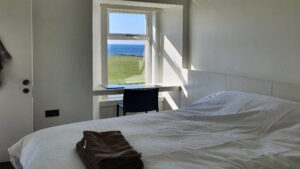
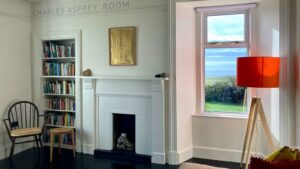
Fee
The Residency Programme is operated on a non-commercial cost-covering basis, and is financially supported by The Museum of Loss and Renewal in order to keep fees low. The residency fee is £1500 GBP, paid by the resident. It includes the residency programme, accommodation, full board, collection/return to nearest airport/ferry point, accommodation in en-suite rooms, work spaces. Catering (3 meals each day) includes locally sourced Orkney ingredients, and meals prepared by our excellent cook. Vegan and vegetarian diets can be catered for.
A 50% deposit is payable within two weeks of accepting a place on the Group Residency. The remaining 50% is payable six weeks in advance of the start of the Group Residency.
You will be responsible for funding and organising your own travel, your own insurances and any visa requirements particular to your country of origin. Travel information will be supplied (Kirkwall Airport and Orkney Ferries), and collection/drop-off at the beginning and end of the Group Residency will be arranged.
We do not have external funding for this project, so regret that we are unable to offer assistance with fees, travel, production costs or other subsistence. Typically, successful applicants source funding by applying to their national arts funding bodies, personal fundraising, or through academic institutional support. Formal Letters of Invitation can be provided to assist in this process.
Schedule Outline
Day 01
Arrival (collection on arrival in Orkney), orientation, introductions, dinner, readings
Days 02-07
- Subject-specific sessions by facilitators
- Presentations and exercises by programme contributors
- Collective and individual (mentored) working sessions
- Working sessions at archaeological sites
- Museum / gallery / festival visit
- Readings of alternative theories and texts
- Catered discursive meals
- Collective critical evaluation and forecasting
Day 08
Departure (transport to Orkney departure points)
Eligibility
- You can be at any stage of your (creative) career
- The programme may best suit (creative) practitioners who are seeking to develop their knowledge and skills within an environment of learning and discussion
- More experienced applicants are very welcome to apply
- Open to (creative) practitioners based in any country but applicants should have a good working knowledge of English
- Applications from duos and partnerships are welcomed
